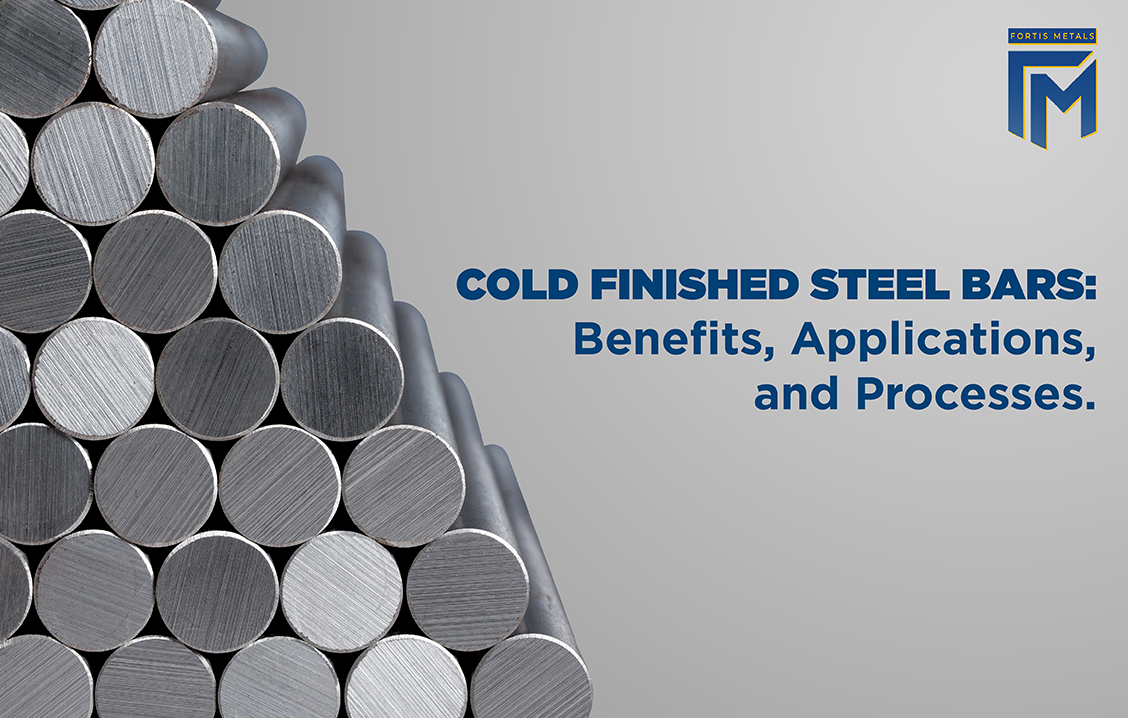Cold Finished Steel Bars: Benefits, Applications, and Processes
When it comes to straightness, tolerance, and concentricity, cold-finished carbon steel bars are superior to other varieties. The production of bearings, shafts, fasteners, oil pump shafts, hand tools, concrete accessories, car axles, and wheel spindles all make use of these bars.
Distinct Features of Steel Bars that are Cold-Finished
Cold finishing, which includes cold drawing, grinding, and polishing, is the procedure used to create a cold finished steel bar. The steel bars' yield point rises as a result of this procedure. Among the benefits of cold-finished bars are:
- Bright fresh surface finish: The surface finish of cold-finished bars is aesthetically pleasing.
- Better concentricity, tolerance, and straightness: The roundness and dimensional precision of these bars are improved.
- Make cold-drawing possible: Cold-drawing cold-rolled steel bars improve their yield and tensile strength without requiring costly heat treatments.
- Greater machinability: Better surface smoothness, quicker cutting rates, and longer tool life are all results of cold rolled steel bar's enhanced machinability.
Production and Visual Appeal of Cold-Finished Steel Bars
The finish of cold-rolled steel bars is usually smooth and grey. When the steel is cool or at room temperature, the bars are finally rolled. To keep the bars from oxidising and to preserve their grey hue, the procedure is carried out with them submerged in oil. This guarantees that the rollers will run smoothly.
Limitation Formation and Heat Treatment
There are just a few forms that can be made out of cold-finished steel. When cold, steel is a particularly difficult material to process. Hardening, deformation, and even breaking or weakening can result from bending, pounding, and deforming it at room temperature. The steel must be heated above a certain point in order to take on the required shape. This will make it easier to bend, mould, and shape the steel without causing any harm to it.
Extra Characteristics and Uses for Cold-Finished Steel Bars
Chemical colouring and patination are additional options for cold-rolled steel bars. Cold-finished steels are perfect for base metal manufacturing, which is followed by a secondary colouring process since they don't have surface oxidation. Furthermore, the beautiful workmanship of cold-finished bars is enhanced by their precise and acute tolerance and contour.
There are several uses for cold-finished steel bars in the building and automotive sectors, among others. They are used in both structural and non-structural applications and offer strength at a reduced cost. In the automobile sector, cold-drawn round bars are particularly helpful for creating wheel rims.
Practical Benefits of Bars That Are Cold Rolled
Because of its high tensile strength, cold-rolled steel bars may be used in a variety of sectors, such as aerospace, automotive, and construction. Drawing the metal through cold dies and rolling it into a bar shape is known as cold rolling. In contrast to other varieties of cold-rolled steel bars, cold finished steel bars have a lower carbon content because they are fully annealed at ambient temperature prior to rolling.
Consider purchasing cold rolled steel bar types for a number of reasons. Because they don't require costly, high-temperature furnaces, they provide a cost-effective substitute for hot-rolled steel bars. Because no heat is used during manufacture, cold-finished bars are less likely to deform and break. They are more affordable per unit weight and can be produced in greater quantities.
The Cold-Finished Steel Bar from Fortis Metal
Our speciality at Fortis Metals is producing and shipping cold-finished bars to clients all over the world. In terms of size, form, and unique finishes, our bars meet strict quality criteria. Request a free quotation right now!

